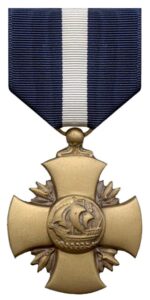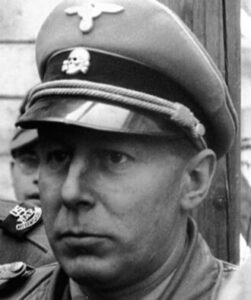Hanneken, Herman Henry, born 23-06-1893 in St. Louis, Missouri,  United States, to William G Hanneken (1859–1928)
United States, to William G Hanneken (1859–1928)  and his wife Helen, born Lakers, Hanneken (1861–1951). Herman had three brothers, three sisters and one half brother, Bernard W. Hanneken (1888–1972), Joseph Hanneken (1895–1944), William Henry Hanneken (1900–1933), Helen Hanneken Schindler (1890–1935), Dorothy C Hanneken Zulauf (1891–1978) Cecelia Theresa Hanneken (1898–1929) and halfbrother Ronald V. Hanneken (1928–2023), son of the late John and Viola (born Gokin) Hanneken. Herman was married with Margaret Patricia, born, Reidy Hanneken (1909–1992). The couple had two daughters Patricia Ann Hanneken Adams (1931–2021)
and his wife Helen, born Lakers, Hanneken (1861–1951). Herman had three brothers, three sisters and one half brother, Bernard W. Hanneken (1888–1972), Joseph Hanneken (1895–1944), William Henry Hanneken (1900–1933), Helen Hanneken Schindler (1890–1935), Dorothy C Hanneken Zulauf (1891–1978) Cecelia Theresa Hanneken (1898–1929) and halfbrother Ronald V. Hanneken (1928–2023), son of the late John and Viola (born Gokin) Hanneken. Herman was married with Margaret Patricia, born, Reidy Hanneken (1909–1992). The couple had two daughters Patricia Ann Hanneken Adams (1931–2021)  and Marilyn Cecilia Hanneken Logan (1933–2013).
and Marilyn Cecilia Hanneken Logan (1933–2013). 
Beginning his career as an enlisted man, Herman Hanneken served in the Banana Wars of the 1910s and 1920s.  During the United States occupation of Haiti, he assassinated the resistance leader Charlemagne Masséna Péralte,
During the United States occupation of Haiti, he assassinated the resistance leader Charlemagne Masséna Péralte, 
 for which he was awarded the Medal of Honor
for which he was awarded the Medal of Honor ![]() . Péralte was shot at close range, 01-11-1919 (aged 33) . Hanneken and his men then fled with Peralte’s body strapped onto a mule. Subsequently, granted a commission, Hanneken served in Haiti for several more months and was awarded a Navy Cross
. Péralte was shot at close range, 01-11-1919 (aged 33) . Hanneken and his men then fled with Peralte’s body strapped onto a mule. Subsequently, granted a commission, Hanneken served in Haiti for several more months and was awarded a Navy Cross ![]() for killing another rebel leader. Herman received a second Navy Cross for his actions during the occupation of Nicaragua in the late 1920s, for “bringing in” General José María Jirón Ruano,
for killing another rebel leader. Herman received a second Navy Cross for his actions during the occupation of Nicaragua in the late 1920s, for “bringing in” General José María Jirón Ruano,  the Guatemalan Chief of Staff of the Nicaraguan General Augusto César Sandino.
the Guatemalan Chief of Staff of the Nicaraguan General Augusto César Sandino.  Major Hanneken was ordered to Quantico in June 1938, and two months later reported for a course of instruction at that base in the Senior Course, Marine Corps Schools.
Major Hanneken was ordered to Quantico in June 1938, and two months later reported for a course of instruction at that base in the Senior Course, Marine Corps Schools.
From June 1939 to December 1940, he was commanding officer, Marine Barracks, Naval Ammunition Depot, Hingham, Massachusetts. He was next ordered to New York to assume command of the Marine detachment aboard the USS Harry Lee  with additional duties as Transport Quartermaster.
with additional duties as Transport Quartermaster.
Hanneken served with the 1st Marine Division ![]() nickname The Old Breed Blue Diamond under command of General Oliver Prince Smith nickname “O.P.”, “the professor”, “student general”
nickname The Old Breed Blue Diamond under command of General Oliver Prince Smith nickname “O.P.”, “the professor”, “student general” 
 from June 1941 until November 1944, when he returned to the United States to command the 2nd Infantry Training Regiment and the Headquarters Battalion, at Camp Pendleton, Oceanside, California.
from June 1941 until November 1944, when he returned to the United States to command the 2nd Infantry Training Regiment and the Headquarters Battalion, at Camp Pendleton, Oceanside, California.
While with the famed 1st Marine Division his duties were varied. While commander of the 2nd Battalion of 7th Marine Regiment during the Guadalcanal campaign he was awarded the Silver Star ![]() for conspicuous gallantry and intrepidity in action against the enemy. Hanneken relieved Colonel Julian Neil Frisbie
for conspicuous gallantry and intrepidity in action against the enemy. Hanneken relieved Colonel Julian Neil Frisbie 
 as commanding officer of the 7th Marines and led this regiment during the Peleliu action, where he received the Legion of Merit
as commanding officer of the 7th Marines and led this regiment during the Peleliu action, where he received the Legion of Merit ![]() for meritorious conduct in action, and during the Cape Gloucester operation he was decorated with the Bronze Star.
for meritorious conduct in action, and during the Cape Gloucester operation he was decorated with the Bronze Star. ![]()
In September 1945, he was assigned as commanding officer of the Staging Regiment at the Marine Training and Replacement Command, San Diego Area, prior to his transfer to the Troop Training Unit, Amphibious Forces, Pacific Fleet. 
It was as Chief of Staff of that organization that he was transferred to the retired list for Marine Corps officers. He retired on 01-07-1948, concluding a 34-year career in the Marine Corps.  Hanneken was advanced to his final rank of Brigadier General
Hanneken was advanced to his final rank of Brigadier General ![]() upon his retirement for having been specially commended for service in actual combat.
upon his retirement for having been specially commended for service in actual combat.
Death and burial ground of Hanneken, Herman Henry “Hard-Hearted”.




Brigadier General Hanneken died on 23-08-1986, at the Veterans Hospital in LaJolla, California, Herman was 93 years old and was buried with honors four days later at the Fort Rosecrans National Cemetery, San Diego, California. Section C, Grave 166-D. 1700 Cabrillo Memorial Dr, San Diego, CA 92106, USA.

























Leave a Reply